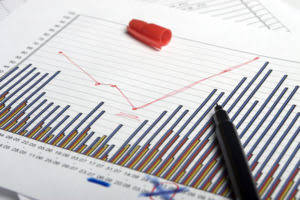
When a company receives payment from a client for the sale of a product, the cash received is tabulated in net sales along with the receipts from other sales and returns. The cost of sales is subtracted gl account from that sum to yield the gross profit for that reporting period. Thus, it can be very difficult to organize if you have a huge number of transactions in a given accounting period.
What is a General Ledger (GL)?
Thus, you need to refer to a related subsidiary ledger to know the details of such a control account. This is because the details recorded in your ledger accounts provide sufficient details to file your tax returns. A General Ledger is one of the important records in the system of accounting. It is prepared after you pass journal entries in the Books of Original Entry (Journal). Thus, each transaction of your business takes place in such a way that this equality between the two sides of the accounting equation is always maintained.

In accounting, a general ledger is used to record a company’s ongoing transactions. Within a general ledger, transactional data is organized into assets, liabilities, revenues, expenses, and owner’s equity. After each sub-ledger has been closed out, the accountant prepares the trial balance. To use an account from the assigned chart of accounts in your company code, a user must create a company code segment for the account. The combination of the chart of accounts segment and the company code segment form a complete general ledger account. The information in the company code segment controls the entry of accounting documents and the management of accounting data.
Financial Management: Overview and Role and Responsibilities
In order to simplify the audit of accounting records or the analysis of records by internal stakeholders, subsidiary ledgers can be created. General Ledger Codes are nothing but the numeric codes that you assign to different General Ledger Accounts. These accounts help you in organizing the General Ledger Accounts properly and recording transactions quickly. Thus, it forms the basis of your financial statements and helps you in evaluating the financial affairs of your firm. Furthermore, unlike journal where transactions are recorded in chronological order as they occur.

Profit and loss accounts will reduce to zero when the balance carry forward program is run at the end of the year and the balance will be moved to retained earnings account. When you start this transaction you need to specify general account number and specify the company code and then click on the Create icon or Create with Template icon as shown below. Learn more about how to find and choose the best GL software for you by reading our complete guide to accounting software. You can also cut right to the chase by checking out our top accounting software recommendations below. For instance, QuickBooks Online only includes accounts receivable and payable with its higher-tier plans. No matter which accounting method you use for your business, keep this equation top of mind.
General Ledger: Meaning, Classification, and Examples
Knowing which type of account to use for each transaction is an important part of bookkeeping. Thus, such a record helps you in tracking various transactions related to specific account heads. Further, it also helps in speeding up the process of preparing books of accounts. Now, each of your transactions follows a procedure before they are represented in the final books of accounts. First, the transactions are recorded in the Original Book of Entry, known as Journal.
- A general ledger and a subsidiary ledger are two types of financial records that are typically used in business settings.
- In this step, you need to compare the previous accounting periods closing trial balances to the opening balances of the current period ledger accounts.
- Mostly, the companies post these estimates to the related expense account.
- Thus, all of this becomes easy when you prepare proper ledger accounts.
The totals calculated in the general ledger are then entered into other key financial reports, notably the balance sheet — sometimes called the statement of financial position. The balance sheet records assets and liabilities, as well as the income statement, which shows revenues and expenses. A general ledger and a subsidiary ledger are two types of financial records that are typically used in business settings. A company’s GL is the basis of its financial reporting and the source of the information used therein. Transactions are noted from a source document, such as an invoice or bill, and tracked in the general journal. Periodically, all transactions made within a company are posted to the general ledger.
